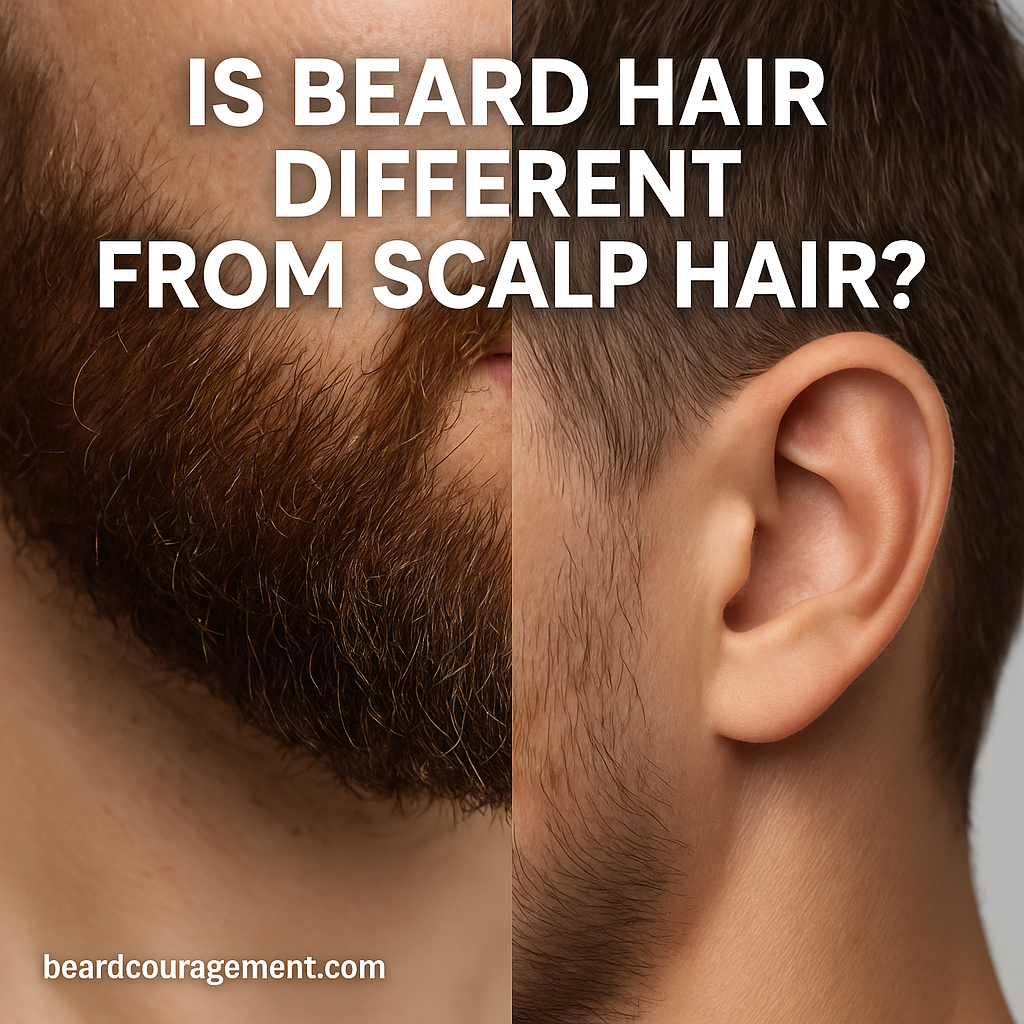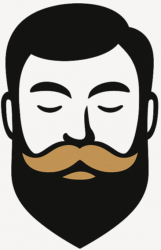
Both beard and scalp hair are made of keratin, a protein that forms the foundation of hair strands. But what sets them apart is how hormones and genetics influence their growth.
1. Hormones: The Testosterone Effect
Beard hair growth depends on testosterone and its byproduct DHT (dihydrotestosterone). These hormones activate facial hair follicles, which are more sensitive to them than those on your scalp.
That’s why beards are thicker, curlier, and often darker — DHT changes the texture and size of the follicle.
In contrast: scalp hair isn’t as influenced by DHT and tends to be finer and straighter. In fact, too much DHT can cause scalp hair loss while encouraging beard growth — a fascinating balance between the two.
2. Texture and Thickness
Beard hair is thicker, curlier, and more wiry than scalp hair because of its follicle shape.
Facial hair follicles are oval or irregular in cross-section, producing textured strands that naturally curl.
Scalp hair follicles, on the other hand, are rounder and smoother, resulting in softer and straighter strands.
That’s why: your beard often feels coarse or wiry compared to the rest of your hair — it’s literally built differently.
3. Growth Speed and Direction
Beard hair grows faster but less evenly than scalp hair.
- Scalp hair: grows about 1.25 cm per month and follows a consistent direction.
- Beard hair: grows roughly the same speed but in multiple directions — that’s why trimming and shaping are essential.
Facial hair also has a shorter anagen (growth) phase — meaning it reaches its full length sooner and then stops growing, while scalp hair can continue growing for years.
4. Oil Production and Skin Type
The skin under your beard is different from your scalp.
- Your scalp has sebaceous glands that constantly produce oil to keep your hair hydrated.
- Facial skin produces less oil — which is why beard hair dries out faster and feels rough.
That’s why: beard oil is so important. It replaces what your skin can’t naturally produce and keeps both hair and skin moisturized.
How These Differences Affect Beard Care
Since beard hair behaves differently, it needs a tailored routine:
- Use Beard-Specific Products
Regular shampoo is too harsh for your beard. Use a beard wash that cleanses without stripping oils. - Apply Beard Oil Daily
Hydrates coarse hair and prevents itchiness or dandruff underneath. - Brush or Comb Regularly
Helps distribute oils evenly and trains the beard to grow in a uniform direction. - Trim with Precision
Because beard hair grows unevenly, trimming keeps it balanced and healthy. - Stay Consistent
Just like scalp care, daily consistency is what separates a scruffy beard from a great one.
The Bottom Line
Beard hair and scalp hair might share the same roots (literally), but they’re different in almost every way that matters — texture, oil levels, direction, and even hormonal influence.
Understanding these differences gives you the power to care for your beard properly — with products, habits, and attention that help it grow strong, soft, and healthy.
Your beard deserves its own routine — because it’s not just “head hair on your face.” It’s a world of its own.
